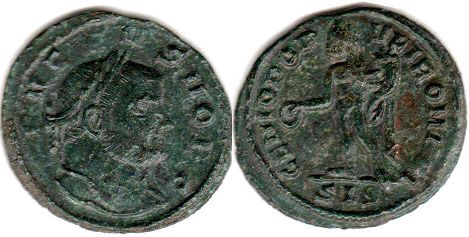Coins of Severus II - catalog with values
Roman Caesar 305-306

FL VAL SEVERVS NOB C
GENIO POPVLI ROMANI
306-307
copper
Siscia
20 mm.
Laureate head right / Flavius Valerius Severus Noble Caesar
Genius standing left, holding patera and cornucopia / Genius of the people of Rome
Coin value ~ US$80-100
Costs of Severus II coins in this catalog approximate and indicated specifically for the coin shown in the picture.
I do not buy or sell coins - this is just a catalog.
See other coins of Imperial Rome.

